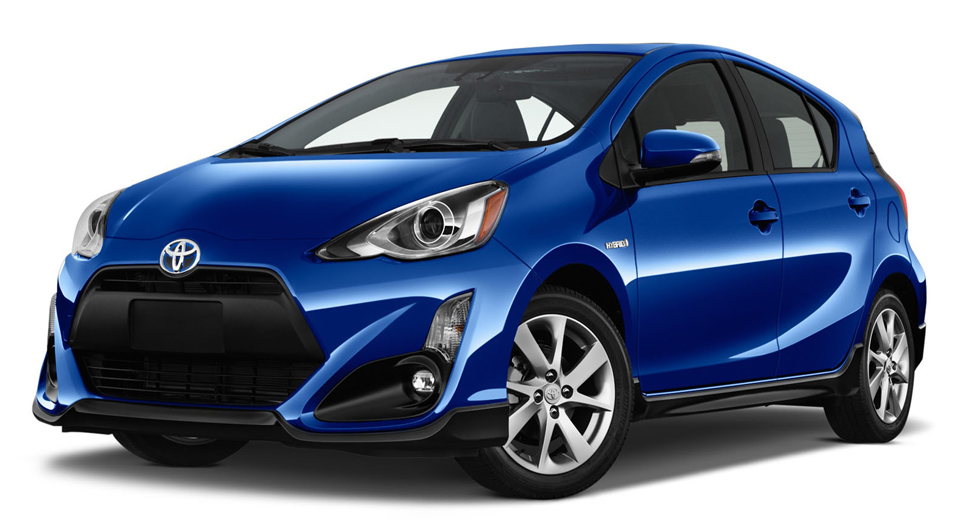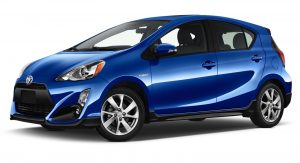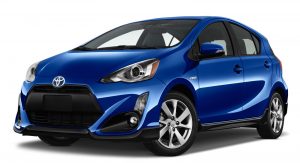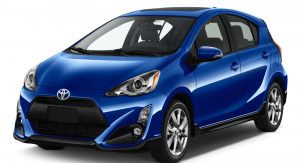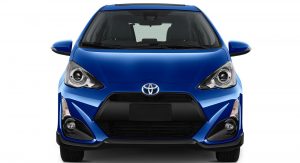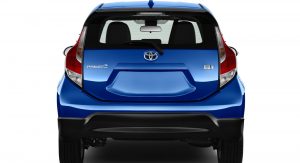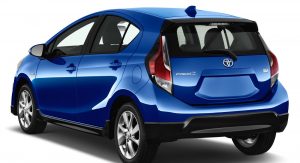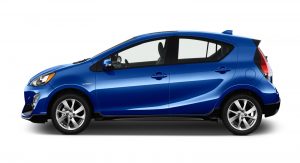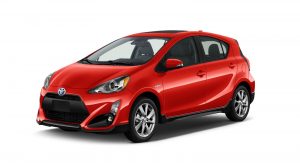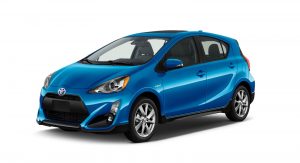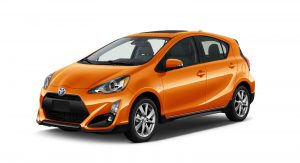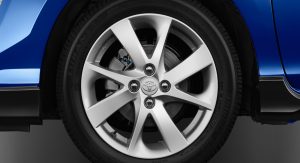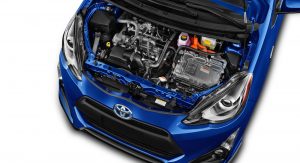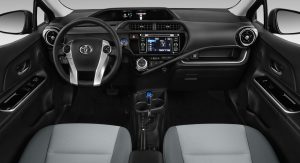The Prius C has been a moderate success for Toyota, if not quite a stellar one.
Out of the 2.5 million vehicles (or 136k Prius-family models) it sold in America last year, the hybrid hatchback accounted for just over 20,000 – or a little more than half the number of comparably sized Yaris models it sold.
This down from the 35-40k Prius Cs it sold in previous years. If Toyota wants to attract more buyers with its smallest hybrid, it’s going to need some help. And help has come in the form of a series of updates.
The revisions applied to the 2017 Toyota Prius C include some cosmetic updates – including a new front fascia, rear bumper, rocker panels, and rear spoiler (applied here to smooth the airflow more than providing downforce). Alloy wheels also come standard on all trim levels – measuring 15 inches as standard, with optional 16s. (The name of the game here is “low rolling resistance,” after all, not traction.)
The bigger addition, however, is the fitment of the Toyota Safety Sense-C suite as standard. Previously optional on higher-grade models, TSS-C includes pre-collision and lane-departure systems as well as automatic high beams, all of which add up to a safer vehicle.
This is the second facelift Toyota has applied to the Prius C after the 2015 update and following its launch in 2012. The model, sold in much higher numbers as the Aqua in Japan, pairs a 1.5-liter inline-four to an electric motor, 0.9-kWh battery, and continuously variable transmission to deliver a combined 99 horsepower and an EPA estimated fuel economy of 48mpg city/43mpg highway/46mpg combined.







